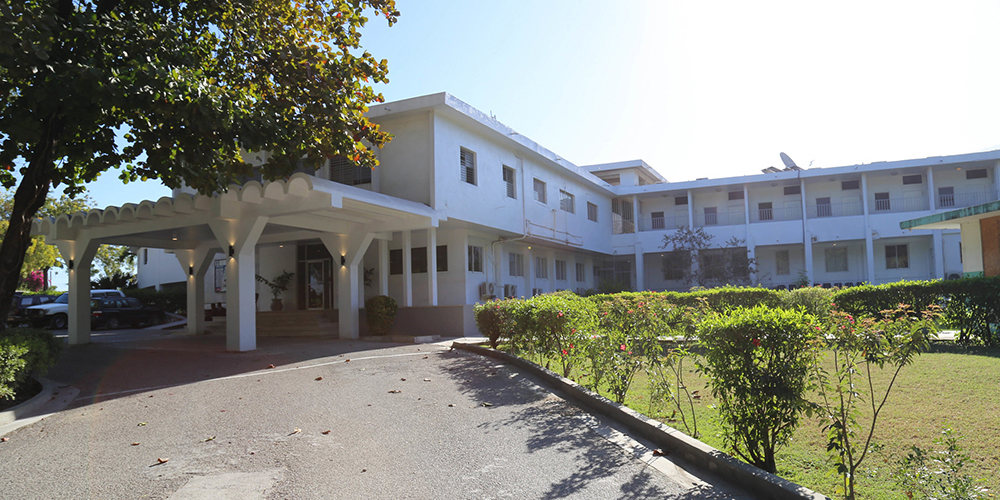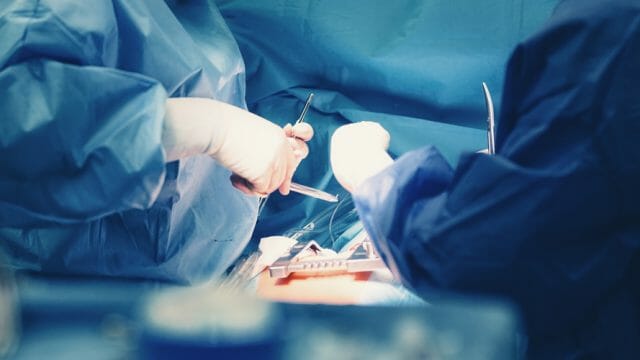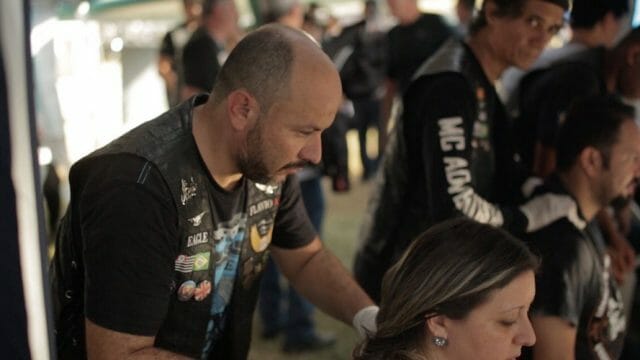Health-care institution is increasing its footprint in the community and beyond.

Seventh-day Adventist leaders and church members in Haiti met on the lawn of its most prestigious institution, Hôpital Adventiste d’Haiti (Haiti Adventist Hospital, HAH), to celebrate life and God’s goodness on the 10th anniversary of the devastating earthquake that killed thousands of people in Port-au-Prince, Haiti, on January 12, 2010.
Officials from Loma Linda University Health and Adventist Health International, along with surgeons, medical staff, and community members, gathered for the special ceremony on January 12, 2020, to reminisce on the impact of the hospital in its aid to the many injured throughout the days, weeks, months, and years that followed the quake. Leaders also shared expansion plans that will help the hospital to continue providing top-notch health care services to the community and the nation.
“In these ten years, Haiti has experienced one thing after another, and those who have suffered a lot have grown through the challenges,” said Pierre Caporal, president of the Seventh-day Adventist Church in Haiti and chair of the executive committee that oversees the hospital. “As a church, we can praise God for His grace and specifically through the quality service the hospital has provided for the people in Haiti, thanks to the commitment of many who have partnered to strengthen the health institution throughout the years.”
Loma Linda University Involvement
Loma Linda University president Richard Hart, who saw the establishment of the hospital almost 40 years ago and has been instrumental in supporting the institution, said that despite its financial ups and downs, there was never a time to give up on the institution.
“Haiti has always had a special place in my heart,” Hart said. “It has a special place for Loma Linda University and has a very special place for Adventist Health International. While it is sad to remember [about the earthquake 10 years ago], we also want to look to the future, so plans are put in place to continue strengthening the hospital, to send staff here, improve the equipment, and remodel the hospital.”
The most recent upgrades to the hospital include state-of-the-art operating theaters, a clinical laboratory, and remodeling of the emergency department, as well as an upgraded pediatric unit, which is almost completed, Hart said.
The Adventist hospital has upgraded its physical therapy services; has seen performance of orthopedic surgeries grow every year since 2010; will formalize plans for a residency program with LLU orthopedic surgeons and a local residency program in Haiti; and will re-open its orthopedics and prosthetics services in August 2020.
“We have a goal for this hospital in Haiti to make it into a true teaching hospital. Our goal is to work with the [Adventist] university to work with the government of Haiti and work with other Adventist institutions,” Hart said.
The plan, which has already been approved by the Loma Linda University Health board, would designate HAH as a global campus of LLUH. It would become the second international global campus after the Adventist hospital in Malawi, Africa, Hart said.
Immediate expansion plans include a new communal ward that will provide 24 additional beds. The ward is expected to be completed early in 2021, said HAH’s Chief Executive Officer, Jere Chrispens. Chrispens also shared plans to build more housing for medical staff and other staff volunteers who serve the hospital for short-term and long-term stays, in coordinated efforts with LLU and AHI. Existing duplexes on campus for current volunteer staff have already been remodeled, he added.
Providing Quality Care
Harry Jean, a representative of the mayor’s office in Carrefour, said he and several family members have benefited from orthopedic surgeries at HAH. Jean praised the work of the Adventist institution, its clear-cut mission, and how instrumental it was after the earthquake.
“You do so much for the community, keep providing quality service for the country. Never stop doing so,” Jean said.
Scott Nelson, chief of surgery at HAH and associate professor at LLU, has been living intermittently in Haiti since the earthquake and has managed the thousands of surgeries over the past 10 years as part of the staff at HAH. Nelson, who is an orthopedic trauma surgeon, said the experience at HAH has been transformative. He was among the first to arrive in Haiti, less than 48 hours after the disaster.
“I planned to stay for a short time, but it soon became clear that I needed to stay longer,” Nelson said in French during the special ceremony. “I lived here in the hospital for the next six months and have continued my passion for the mission of this hospital and the needs of Haiti ever since.”
Nelson said the tragedy provided an opportunity to improve the quality of services at HAH. “We can provide services never before possible in Haiti. Some of these services are rare at even the most advanced centers in North America. Our work here has been possible because of the compassion of local hospital staff, generous donors, volunteers, and, most importantly, because of a mighty God who has blessed us every day.”
Haiti Adventist Hospital stands as the best emergency hospital in the metropolitan area, according to Haiti’s Ministry of Health, said Franck Geneus, chief of staff at HAH.
“The hospital is not the biggest in capacity, but it’s in the lead in orthopedic surgery and trauma, and while other emergency rooms turn away patients, they are sent to HAH’s ER,” he explained. Geneus, who has been overseen the medical staff for more than eight years, said that during the 10 years since the earthquake, the hospital had treated more than 150,000 patients.
Moment of Silence
“Most of the patients come because of strokes, motorcycle accidents, pedestrians’ accidents, fractures, and deformity corrections,” said Irma Henry, who oversees a staff of five in the physical therapy department. She said no two days are the same, and she’s had to learn to be flexible and adaptable to what the patients may need most to get to the therapy office. “Many struggle to even get here for their weekly therapies, and some need a discount for services in order to continue.”
It’s been an experience that has taught her many lessons, she said, as she seeks to become a better vehicle of hope and care for all patients. The support and teamwork of her staff and the rest of the medical staff at HAH have made a difference in her professional and spiritual growth, she added.
A moment of silence was observed for all the victims of the earthquake. Fritz Bissereth, director of the Adventist Development and Relief Agency (ADRA) in Haiti, then recounted how more than 4,000 tons of food were distributed in the months and years after the disaster. In addition, ADRA built more than 600 shelters for families in Carrefour and carried out numerous projects to provide for the basic needs of dozens of communities as displaced residents tried to rebuild their lives.
“We see that out of tragedy came success, out of pain brings glory to God,” Hart said. “We look forward to an ongoing relationship with this institution into the future.”
The original version of this story was posted on the Inter-American Division news site.








